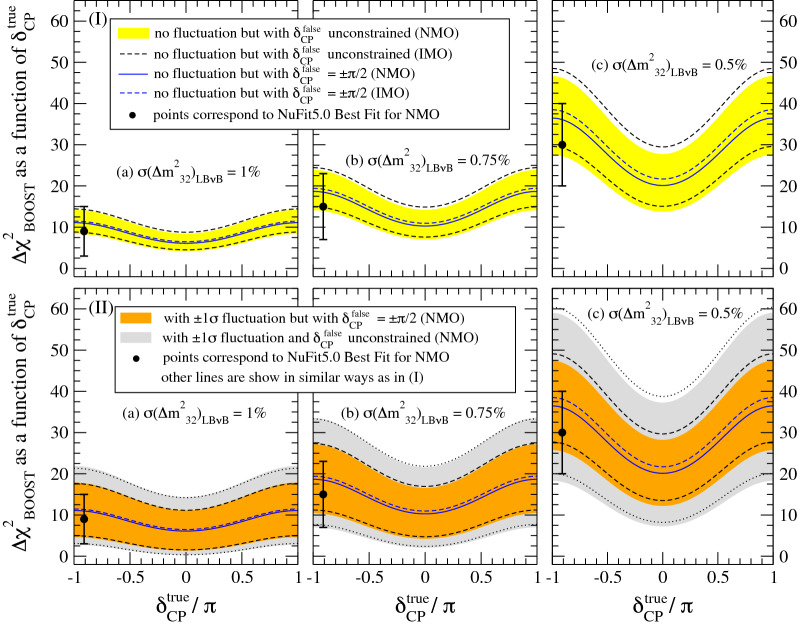Figure 4.
JUNO and LBB mass ordering synergy dependences. The isolated synergy boosting term obtained from the combining JUNO and LBB experiments is represented by , as approximately shown in Eq. (1), see Appendix-C for details. depends on the true value of and precision, where uncertainties are considered: 1.0% (a), 0.75% (b) and 0.5% (c). The term is almost identical for both NMO and IMO solutions. Two specific effects lead the uncertainty in the a priori prediction on . (I) illustrates only the ambiguity of the CP phase (yellow band) impact whereas (II) shows only the impact of the fluctuations of , as measured by LBB (orange band). The JUNO uncertainty on is considered to be less than . The grey bands in (II) show when both effects are taken into account simultaneously. The mean value of the term increases strongly with the precision on . The uncertainties from CP phase ambiguity and fluctuation could deteriorate much of the a priori gain on the prospected sensitivities. fluctuations dominate, while the ambiguity is only noticeable for the best precision. The use of NuFit5.0 data (black point) eliminates the impact of the prediction ambiguity while the impact of remains as fluctuations cannot be predicted a priori. Today’s favoured maximises the sensitivity gain via the term. When quoting sensitivities, we shall consider the lowest bound as the most conservative case.

